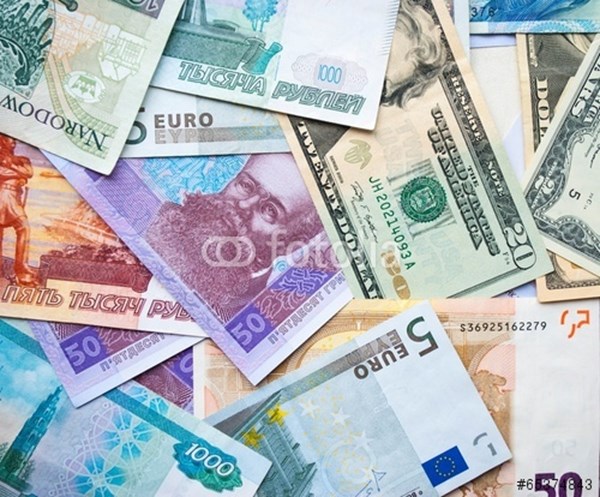Criminals attempt to deposit money that was stolen in Ukraine in Russian banks
Local bandits are trying to exchange dollars, Euros and Ukrainian hryvnias, stolen from ATMs of Lugansk and Donetsk regions of Ukraine, in Russian banks, Forbes journalist Anton Berzhitskii wrote.
Several bankers and a source in law enforcement told Forbes that a significant amount of bills that were stolen from ATMs and bank vaults of Donbas and Lugansk region have emerged in Moscow. Mediators are trying to unofficially exchange these bills with a discount, using their acquaintances with top-managers of major capital banks.
One of the bankers told Forbes that people came to him with a request to exchange several million Euros marked by blue paint. An employee stated that law enforcement officers were also aware of such attempts to exchange stolen currency. This money was stolen from bank branches of the newly established but unrecognized Donetsk and Lugansk People’s Republics, where confusion still reigns, he claims.
The emergence of such bills in Russia isn’t unusual, Forbes representatives say. Another banker claimed that people came to him and asked to exchange UAH(Ukrainian Currency) 50 million worth of damaged bills with a discount.
“The bills from Ukraine took their place in the banking black market on an equal footing with money stolen from bill collectors or the broken ATMs of Russian banks. Sometimes, bandits try to burn the painted portions of such bills and attempt to present the money as salvaged from a fire," the employee of one of law enforcement agencies said.
However, officially, large banks assure that they never see such attempts. Over the past year, the bank hasn’t received a single request relating to the exchange of bills (Euros and UAH) marked by special paint in large amounts, the press service of Sberbank reported. The VTB Group doesn’t work in the territory of DPR and LPR and has no contacts with people, who offer marked money for exchange, the representative of the bank stated.
The VTB Group has a strict system of handling currency, which allows them to identify any attempts at illegal operations, he stressed. The exchange of ruined money is an absolutely legal operation. If the bill is already fragile or in a messed-up state, as a rule, it can be exchanged in Sberbank upon presentation of passport and documents explaining the origin of this bill. This was explained by the co-founder of Forensic Solutions, Alexey Frolov.
“A small commission that doesn’t exceed 1% of the sum is charged during the exchange of money in large amounts,” he said. Another matter is bills, marked by special paint. Its presence means that money was obtained illegally. Some ATMs have special burglary protection. There is a sensor inside the cassettes that hold the bills, which is activated in case of kicking or breakage, and the bills are automatically painted by indelible ink.
The ability to paint bills is actively used by Russia to reduce the ‘paving risk’ where the money is vulnerable while being carried from storage to a transport. The Deputy Representative of Inkahran, Director of Department Encashment (Credit Bank of Moscow) Michael Belousov, told Forbes that “Tests confirm the guarantee of manufacturers about immediate coloring of 100% of briefcase’s content in any attempt of break or unauthorized opening.” According to him, only credit institutions that provided the unique sample of paint, used in briefcases, can exchange painted bills with the Central Bank. The composition of the paint is developed individually for each credit institution and the methodology is regulated by the Bank of Russia.
The bills can be painted on purpose. That is exactly what happened in Ukraine after President Petro Poroshenko issued a decree on the economic blockade of the occupied regions of Donbas in October, 2014. The President commanded that all banks operating in the country close their branches in the regions that have ceased to obey the orders of Kiev. They were also ordered to remove all cash from these branches. The National Bank of Ukraine has standing instructions for the banking system in case of emergencies, which were used by Ukrainian banks in this case.
They were directed to destroy or damage the cash with special paint or a chemical solution if it became impossible to extract from captured territory. However, damaged currency was still fed into circulation. Ukrainian media reported that damaged bills were used to pay allowances and salaries to unsuspecting citizens who stayed to live in the unrecognized Republics.
The original article was published by Forbes.ru.
